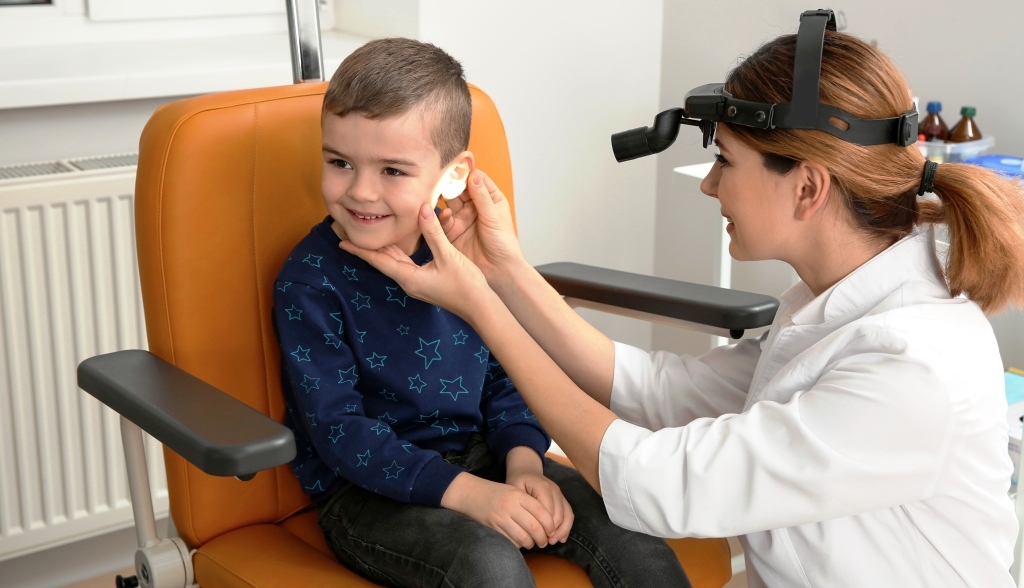Pediatric Audiological Testing

Visual Reinforcement Audiometry (VRA)
During VRA, the child uses earphones or sits between two speakers from which certain sounds are presented. A tone, speech or music may be played in order to encourage the child to respond by shifting their eyes or turning their head. When the child responds to the stimulus, they are rewarded with an interesting visual display, such as an animated toy. VRA performed with headphones can test each ear separately, while testing without headphones evaluates the child’s sound field instead. This test is ideal for children between the ages of seven and thirty months.
Behavioral Observation Audiometry (BOA)
BOA tests hearing by provoking a behavioral response to an acoustic stimulus. Used for infants from birth through seven months, the patient is observed for responses such as body movement, eye widening, eye opening or change in sucking rate after a stimulus is provided. This test is used to rule out hearing loss and related conditions.
Tympanometry
Tympanometry is a compliance test that examines and assesses ear drum functionality by measuring responses to varying air pressure sweeps within the ear canal. A probe is inserted into the ear to produce a test tone and different pressure levels, and then record the responses within the sealed canal. Abnormal results may be the result of fluid in the middle ear, perforated ear drum, eustachian tube dysfunction or impacted ear wax.
Otoacoustic Emissions (OAE) Testing
OAEs are very soft acoustic responses to stimuli from the outer hair cells in the cochlea. Damage to the inner ear causes these responses to disappear, so measurement of these responses can be used to evaluate the health of the ear. OAE testing is performed by inserting a probe containing a microphone and speaker into the ear canal to emit a sound, and then recording the response signal. The test is performed as a routine screening exam for newborns to detect any possibility of hearing loss or related conditions. Absent or very soft response signals may indicate hearing loss, fluid behind the ears or damage to the cochlea.
Auditory Brainstem Response (ABR) Screening
Also known as the Brainstem Auditory Evoked Response (BAER), the ABR screening examines brain waves that are stimulated by a clicking sound in order to evaluate the auditory pathways in the brain and diagnose hearing loss or other serious conditions. Responses are recorded with electrodes while the patietn listens to clicking noises through headphones. The ABR is a more detailed exam often performed to confirm abnormal results received from OAE testing.
For more information, please call our office for a consultation with one of pediatric audiology physicians – (310) 477-5558, or complete the form below.

Make an Appointment
Send us a message by filling out your details in the form below.

